Choosing a bench with a back for the kitchen
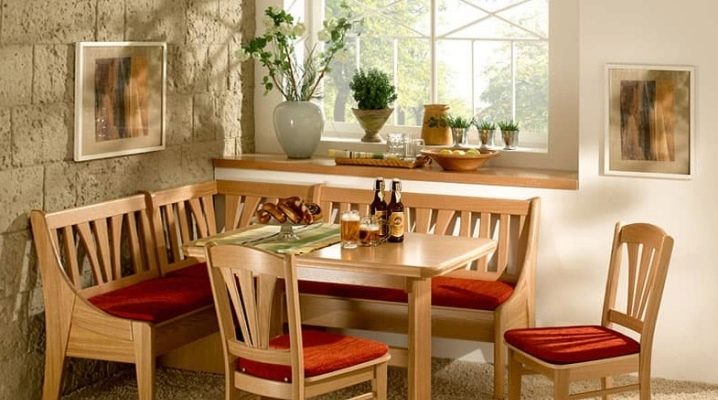
The bench with a backrest is a stylish and functional piece of kitchen furnishings. The modern market offers buyers options for every taste and budget. This article will help the reader to make a choice, outlining the main nuances that you need to know for the harmonious inclusion of the bench in the existing interior composition.

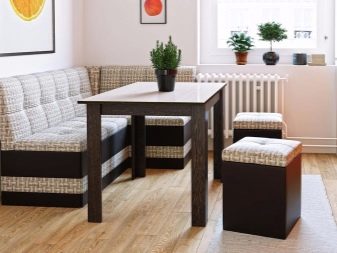
Peculiarities
Most benches with backs are furniture designed for the dining area. They are often sold together with a dining table and a set of chairs. At the same time, the benches are distinguished by their spaciousness: from two to four users of average build can sit on such an element of the situation.
Various materials are used in the manufacture of kitchen benches, including plastic, metal and wood. Depending on the design idea, the bench can have soft upholstery, be made with an emphasis on comfort, style or ergonomics, differ in more or less functionality.
Such a solution is not only beautiful, but also practical, as it saves the useful area of the kitchen. Because of this, such products are often purchased for kitchens of small apartments.
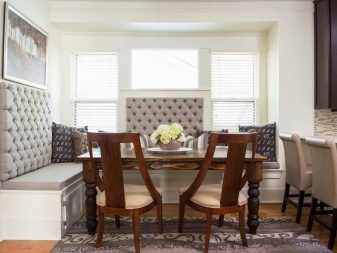
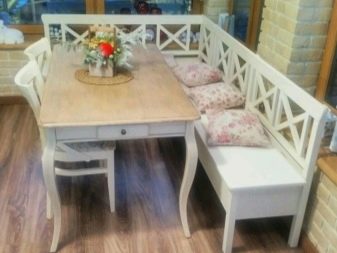
Advantages and disadvantages
Benches with backs have many advantages:
- saving space provides comfort for households and guests;
- products are variable in terms of shapes, sizes, designs, due to which the buyer can choose an option for any kitchen;
- models differ in a wide range of prices, which makes it possible to purchase products for representatives of different strata of the population;
- models can provide for the presence of soft upholstery, which ensures the convenience of placing users;
- there is a possibility of buying a variety with any functionality and operating mechanism;
- many benches with backs can be rearranged to update the interior.
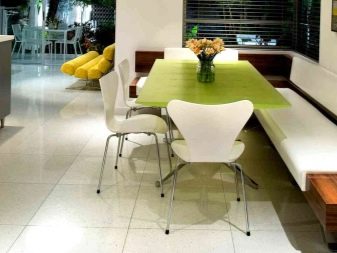
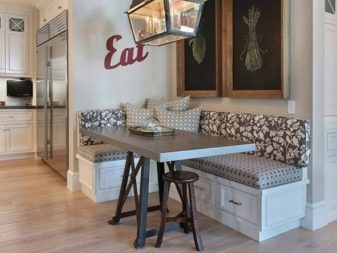
However, benches with backrests also have disadvantages, for example:
- when one of those sitting needs to get up from the bench to get out, the rest have to get up;
- cleaning the kitchen in the area where the bench is located is more difficult than in the case of chairs;
- some varieties do not provide for the replacement of covers, and therefore you need to handle the upholstery with extreme caution;
- soft upholstery is often prone to scratches and other defects due to mechanical damage.
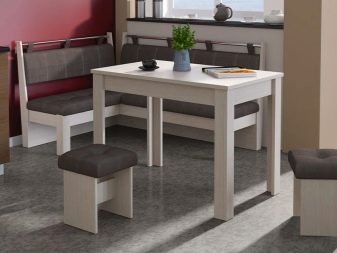
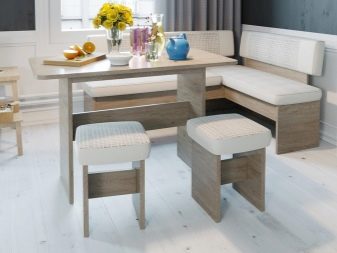
Varieties
Today, manufacturers produce a wide range of benches with backs for the kitchen. Conventionally, all products can be divided into two types: linear and angular.
Products of the first type are more convenient. These modules can be installed on either side of the dining table, taking into account the layout and personal preferences. This allows you to maintain convenience when arranging furniture. As a rule, such products can accommodate two household members. Some benches with backs can resemble small sofas if equipped with armrests and modular seating cushions.
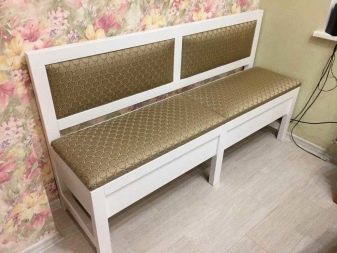
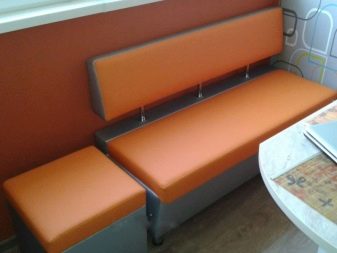
Analogs of the second type are distinguished by the presence of a corner or a connecting elementfixing the two sides of the bench. As a rule, such products have one side larger than the other. Install them strictly in the corner. This saves usable kitchen area.
The disadvantage of such structures is the impossibility of changing the angle, and therefore they must be selected strictly taking into account the planned arrangement of furniture. A corner can often be used as a seat. In addition, the corner piece can have a backrest. As for the back itself, it can be traditional or hinged.
Products with backs attached to the wall are not so comfortable even though they are provided with soft upholstery.
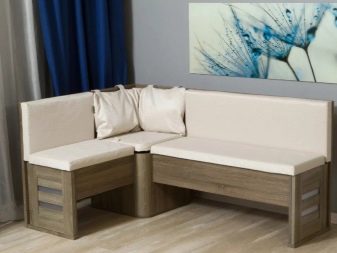
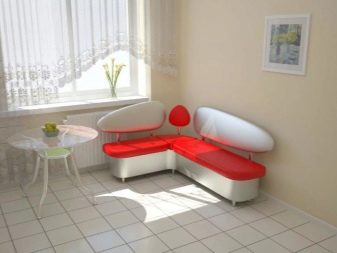
By the type of transformation, benches with backs can be of two types. The former do not provide for the possibility of transformation. The latter have a folding or retractable mechanism. For the convenience of users, the model can have a lower shelf-rack. Also, the product can be equipped with drawers in which you can place items for cleaning the room, small household appliances or other things. Drawers can be roll-out.
In addition, you can buy a modification with a transformation into a compact sofa.
This model can be used to accommodate guests at night.
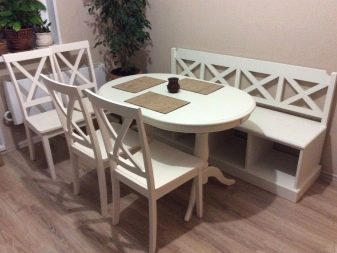

How to choose?
When looking at a bench with a back for arranging a kitchen, several factors need to be taken into account. The key ones will be:
- material resistance to abrasion;
- frame reliability;
- fire resistance;
- environmental friendliness of the raw materials used;
- resistance to moisture;
- inertness to the action of household chemicals;
- resistance to odor absorption.
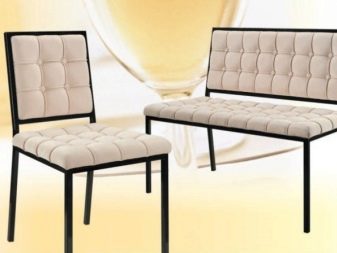
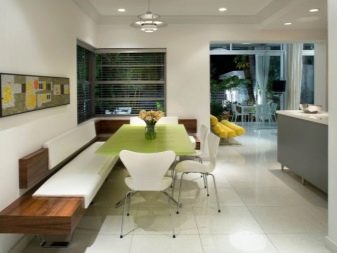
Choosing one or another bench for the kitchen, you can build on the service life. For example, wooden furniture is more practical than a wood chip set. The seat should be soft. In this case, it is better if it is made of a material that can be wiped off with a damp cloth. The boxes will be an added bonus: they will be able to clean things that you rarely use.
The best material is wood. Wooden furniture looks nice, but such a bench needs a matching headset. The upholstery can be made of artificial leather (natural leather is more difficult to clean).
If you plan to change the upholstery, you can buy a bench with the ability to change covers.
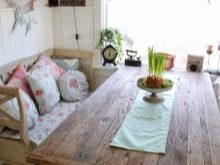
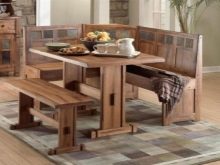
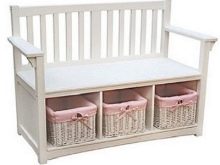
If the budget is limited, you can buy a product made of MDF or chipboard. You can also consider options from plastic and metal, they fit perfectly into modern kitchens.
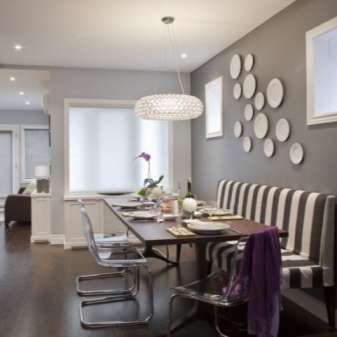
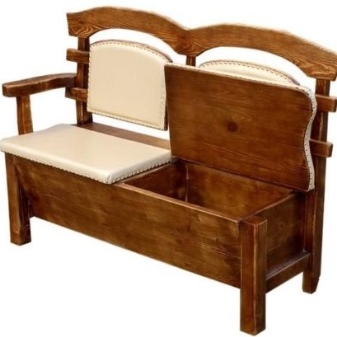
The size of the product is selected taking into account the parameters of the kitchen. Furniture shouldn't look bulky. The best seat fillings are polyurethane and foam.
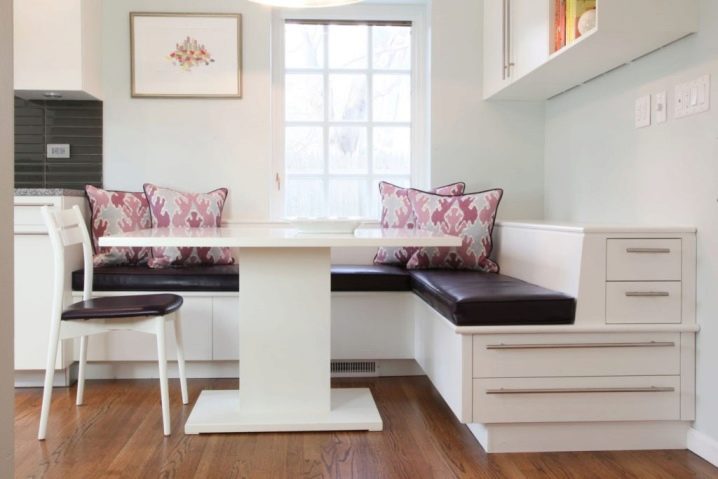
How to make a Provence style bench, see the video below.













The comment was sent successfully.